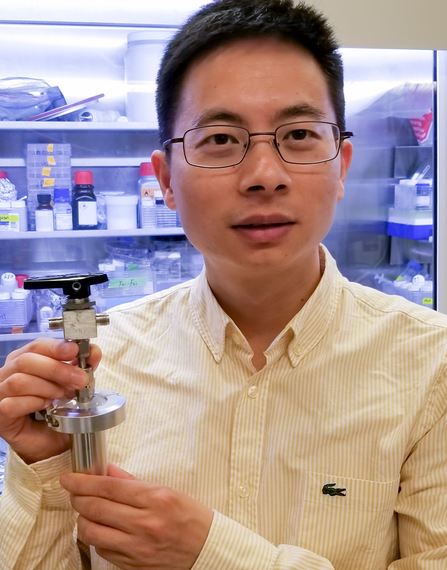A research team from U.S.-based Stanford University has developed a prototype of a manganese-hydrogen battery for the storage of power produced by large-scale wind and solar facilities.
As revealed by the scientists in their research, published in the scientific journal, Nature, the prototype of the water-based battery is only three inches tall and is able to generate 20 milliwatt hours of electricity. Despite its current small size and generation capabilities, the researchers believe that their device may be expanded, and will reach an industrial scale, thus becoming able to “charge and recharge up to 10,000 times.”
“What we’ve done is thrown a special salt into water, dropped in an electrode, and created a reversible chemical reaction that stores electrons in the form of hydrogen gas,” research coordinator, Yi Cui said.
The scientists, which employed the industrial salt used in the production of dry cell batteries, fertilizers, paper and other products, created a reversible electron-exchange between water and manganese sulfate. “The electrons flowing in reacted with the manganese sulfate dissolved in the water to leave particles of manganese dioxide clinging to the electrodes,” the research team explained. The resulting excess electrons, they went on to say, bubbled off as hydrogen gas, thus storing that energy for future use.
As a following step, the scientists reconnected the power source with the depleted device, in order to be sure that the battery could be recharged. Manganese dioxide particles clung to the electrode to combine with water, thus replenishing the manganese sulfate salt. “Once this salt was restored, incoming electrons became surplus, and excess power could bubble off as hydrogen gas, in a process that can be repeated again and again and again,” continued the team.
The research team also said that it is now working on developing a cheaper process to combine manganese sulfate and water, and that this new technology needs further development, in order to prove itself as commercially viable. “We have identified catalysts that could bring us below the $100-per-kilowatt-hour target set by the US Department of Energy (DOE),” research co-author, Wei Chen said.
This content is protected by copyright and may not be reused. If you want to cooperate with us and would like to reuse some of our content, please contact: editors@pv-magazine.com.




6 comments
By submitting this form you agree to pv magazine using your data for the purposes of publishing your comment.
Your personal data will only be disclosed or otherwise transmitted to third parties for the purposes of spam filtering or if this is necessary for technical maintenance of the website. Any other transfer to third parties will not take place unless this is justified on the basis of applicable data protection regulations or if pv magazine is legally obliged to do so.
You may revoke this consent at any time with effect for the future, in which case your personal data will be deleted immediately. Otherwise, your data will be deleted if pv magazine has processed your request or the purpose of data storage is fulfilled.
Further information on data privacy can be found in our Data Protection Policy.